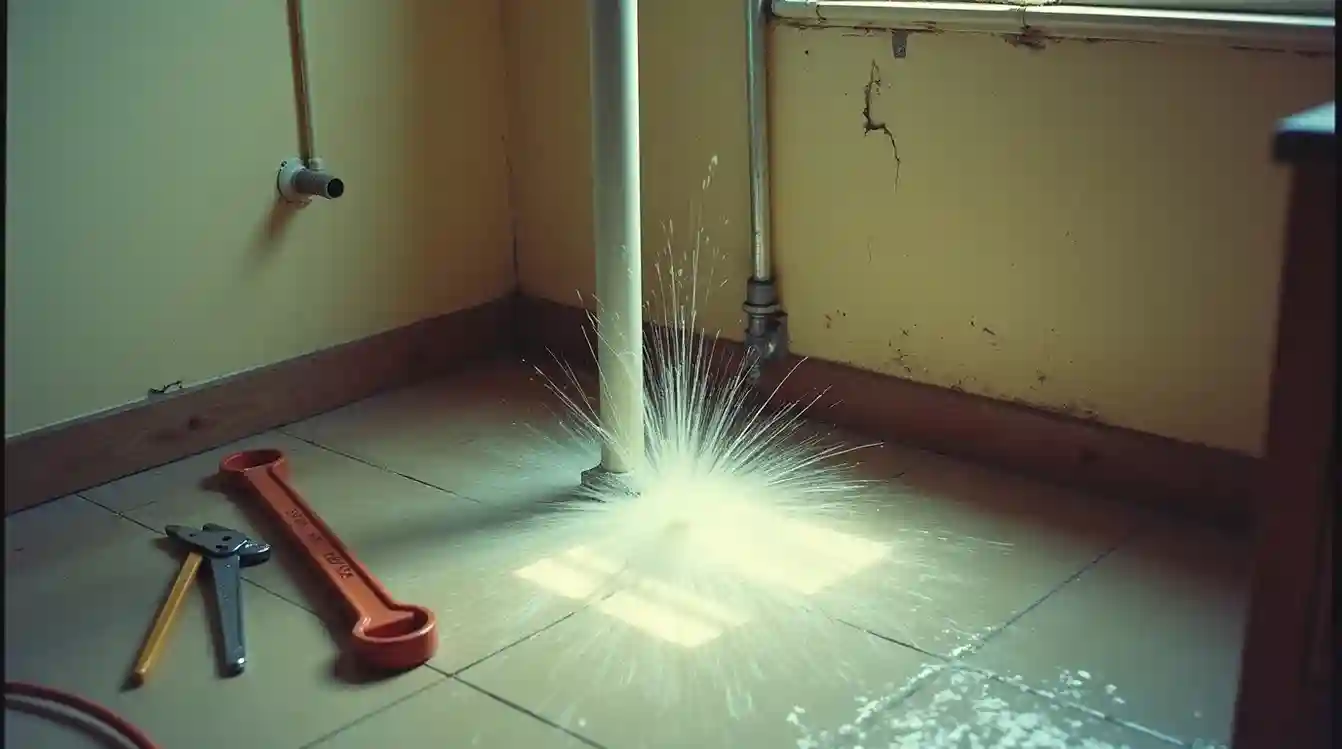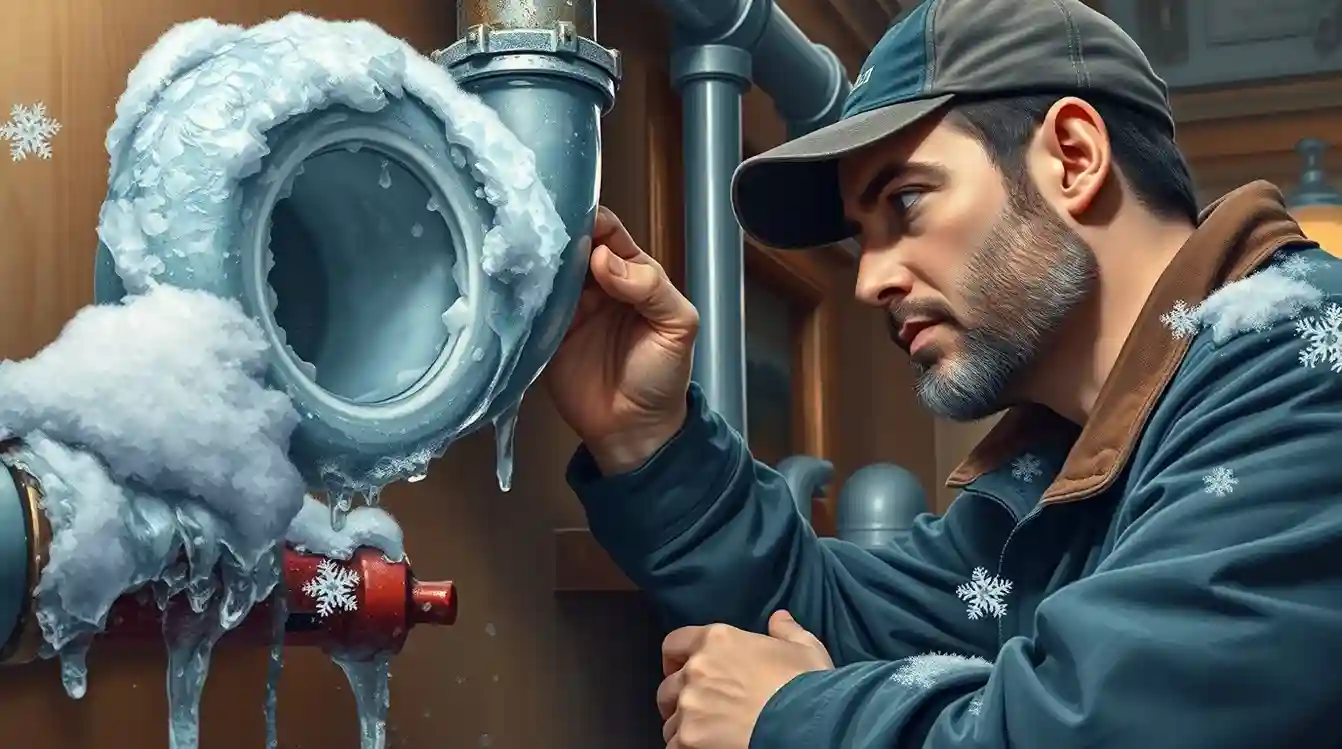
Most people don’t see a burst pipe coming, but the damage says otherwise. One minute, everything’s fine, and the next, you’re scrambling to deal with water everywhere, ruined walls, and expensive repairs. But what if you could stop it before it gets to that point?
The truth is, pipes don’t just burst out of nowhere. They give you clues. Swollen pipes, strange noises, or even a sudden spike in your water bill could mean trouble is brewing.
On average, homeowners spend around $500 on professional repairs for a burst pipe. However, costs can escalate to $5,000 or more if extensive water damage occurs or if new pipes need to be installed underground. Catching these warning signs early can save you from a lot of hassle and expense.
We’ll guide you through spotting the first hints of trouble and taking action before things get out of hand. TradeWorksNW’s got the expert tips you need to keep your home protected.
Why Do Pipes Burst?
Common Causes of Burst Pipes
The thing is, pipes don’t just give out for no reason. There are always factors at play, and knowing what to look for can save you from disaster. Here are some common reasons pipes fail:
- Aging or Corroded Pipes
- Extreme Temperature Swings
- High Water Pressure
- Tree Roots
- Cheap Materials or Poor Installation
- Clogs and Backups
- Shifting Ground
How to Tell If You Have a Burst Pipe
Here’s how to recognize the signs of a busted water pipe before the damage worsens:
- Gushing Water or Visible Leaks
- Discolored or Smelly Water
- Sagging Walls or Ceilings
- Noisy Pipes or Continuous Running Water Sounds
- Frozen Pipes in Cold Weather
Warning Signs Your Pipes are About to Burst
Visible Signs Around the House
If you pay attention, you’ll notice visible signs that something’s wrong. If you see a pipe that looks stretched or ballooned, it’s a clear sign of internal pressure. The pipe is close to failing. Unexplained damp areas on walls, ceilings, or floors can mean a pipe is already leaking.
If you notice drywall buckling or small cracks forming near pipes, it’s often a sign that water is already escaping behind the scenes.
Audible Pipe Burst Sound
If you hear banging, clanking, or whistling sounds, it could mean your plumbing is under stress. These noises are often caused by high pressure, trapped air, or even partial clogs. Gurgling sounds when you run water can also mean a blockage is forming.
Changes in Water Flow or Pressure
Noticed that your shower suddenly feels weak, or your sink takes forever to fill a pot? A drop in water pressure could mean there’s a leak or blockage in your pipes.
Smell or Taste Changes
If your tap water has a metallic taste or smells moldy, take it as a warning sign. Corroded pipes or hidden leaks can contaminate the water supply, especially if the water is sitting stagnant in damaged areas.
How to Prevent a Burst Pipe

1. Protecting Pipes in Winter
Start by insulating pipes in colder areas like basements, garages, or attics. When temperatures drop, let faucets drip to relieve pressure and keep water moving. Also, maintain a steady thermostat setting even when you’re away to prevent freezing.
2. Regular Pipe Maintenance
Staying ahead of plumbing issues doesn’t require a ton of effort. Here are some tips to keep your pipes in great condition:
- Schedule an annual inspection to check for aging or weak pipes.
- Replace pipes made from outdated materials like galvanized steel or lead.
- Fix small leaks as soon as you notice them.
- Clear your drains regularly to avoid clogs that can put pressure on your pipes.
- Use strainers in sinks and showers to catch hair and debris.
3. Monitoring Water Pressure
Keeping an eye on your water pressure is one of the easiest ways to protect your pipes. A simple pressure gauge can help you track levels, and if it’s consistently above 60 psi, consider installing a pressure-reducing valve.
4. Emergency Tips for High-Risk Situations
If you’re worried about your pipes during extreme conditions, taking a few immediate steps can help:
- Shut Off the Main Water Valve: Always know where your main water shut-off is and how to use it in an emergency.
- Wrap Pipes in Heat Tape: Use heat tape or cables to keep exposed pipes warm during freezing weather.
- Open Cabinet Doors: Let warm air circulate around pipes in kitchens and bathrooms by keeping cabinet doors open.
- Disconnect Outdoor Hoses: Drain outdoor faucets and hoses to prevent freezing and back-pressure.
- Be Prepared for the Worst: Keep a plumber’s contact information handy. If something happens, you’ll know exactly who to call.
Quickly locate and fix hidden leaks with our professional Leak Detection and Repair services. Prevent water damage, high bills, and property issues with our advanced equipment and expert plumbers. Call us today for reliable and efficient solutions!
Prevent Burst Pipes and Stay Ahead of the Problem
Nobody wants to deal with the chaos of a burst pipe, so why let it get to that point?
From mysterious sounds to unexplained water stains, these issues are your warning signs. Ignoring them could mean major repairs, water damage, and a lot of unnecessary stress. Avoid the stress and damage by taking action today. Whether you need preventative maintenance, leak detection, or comprehensive repiping services in Snohomish, TradeWorksNW is here to help at 425-420-0011
